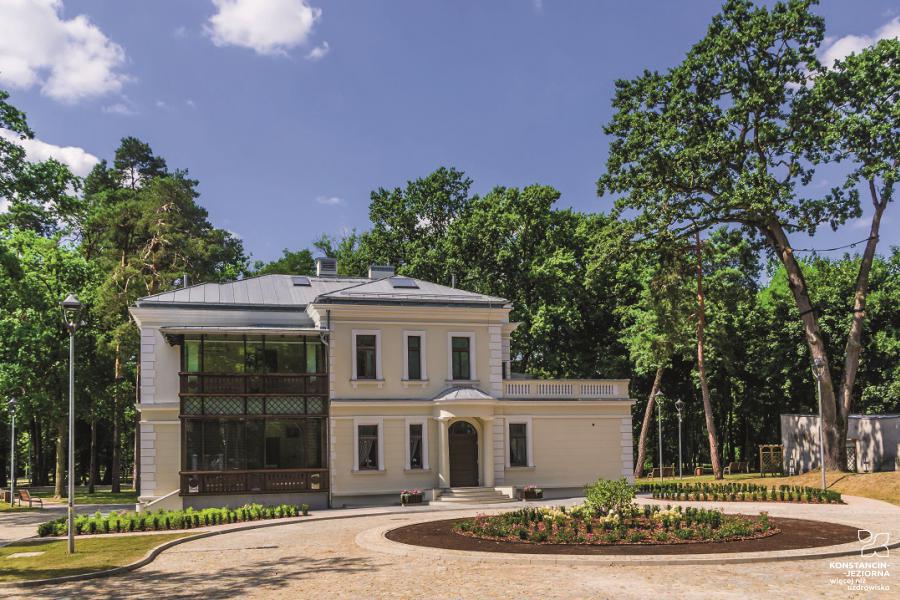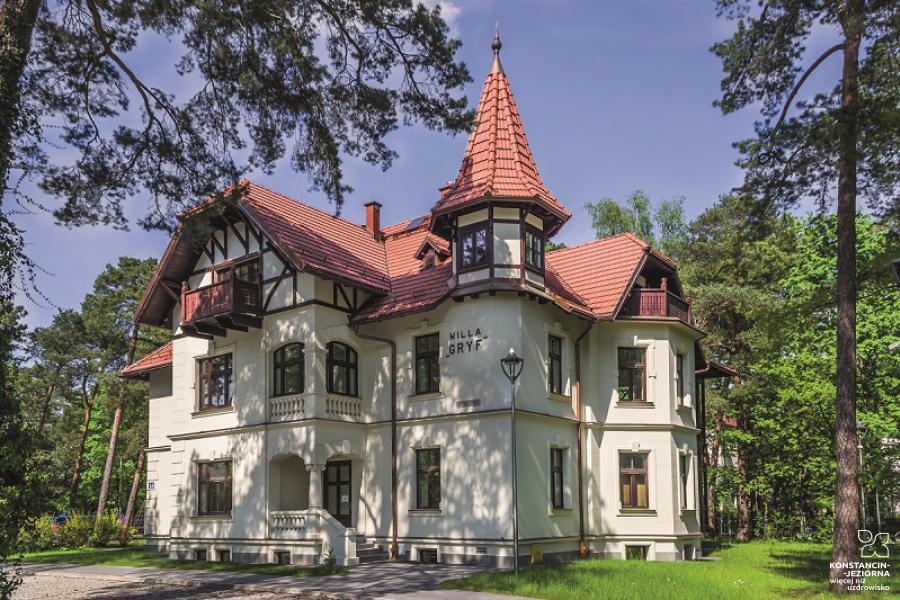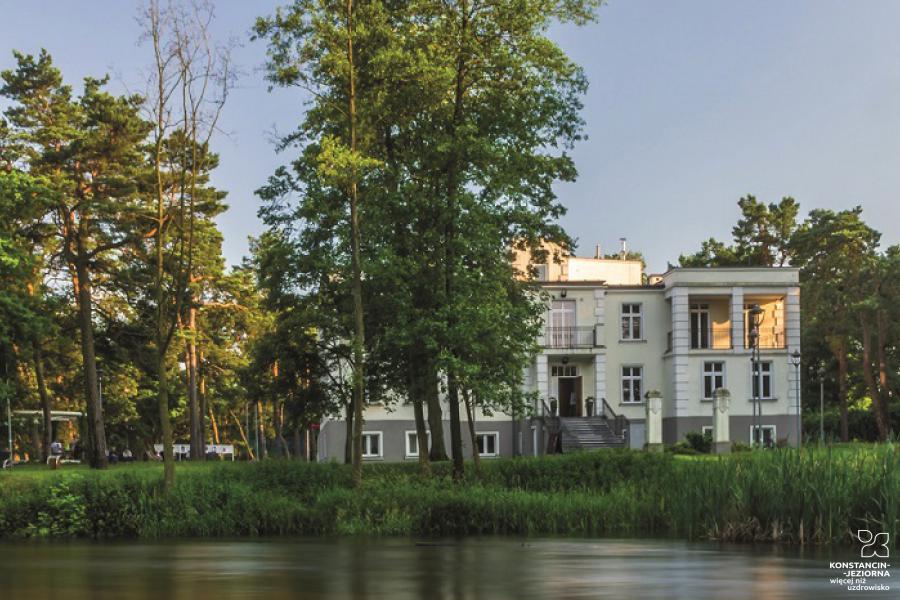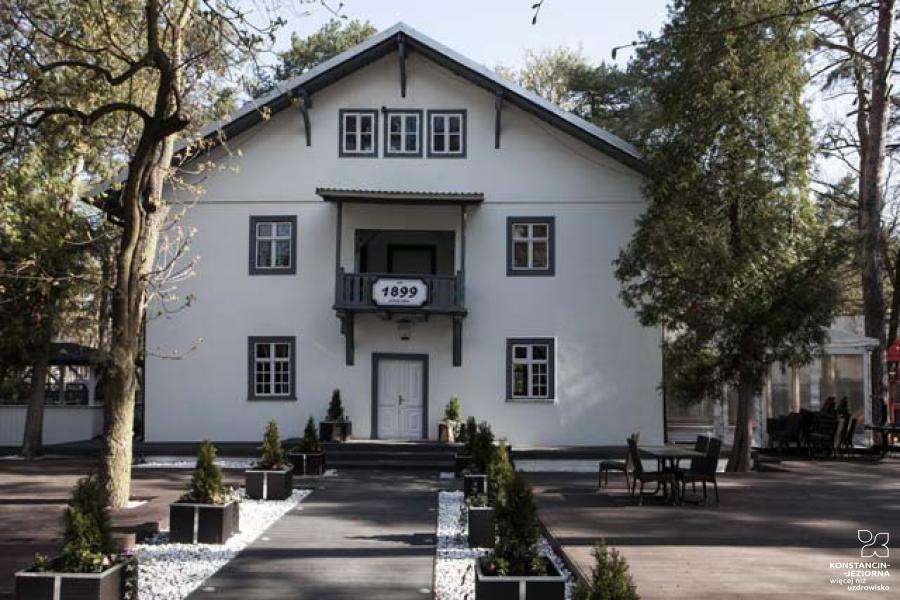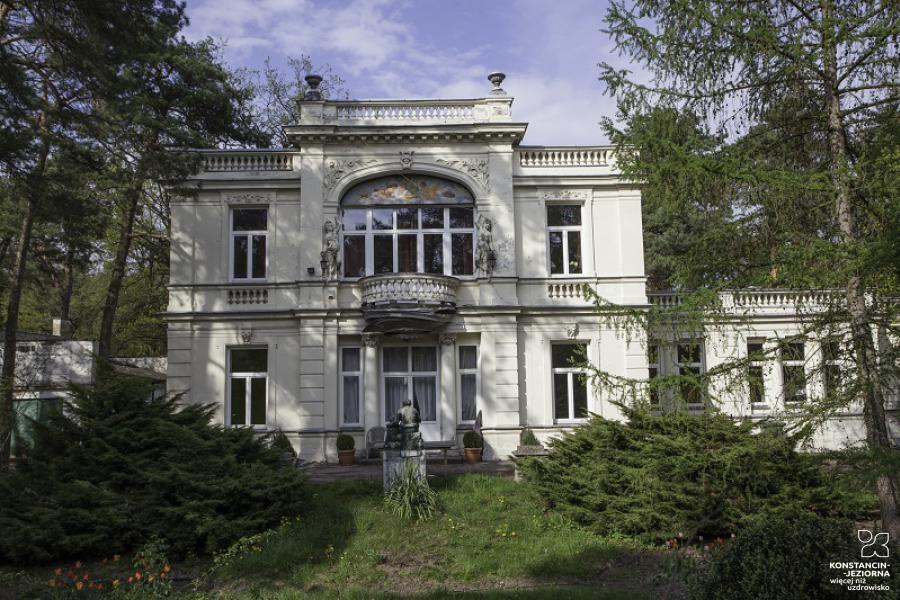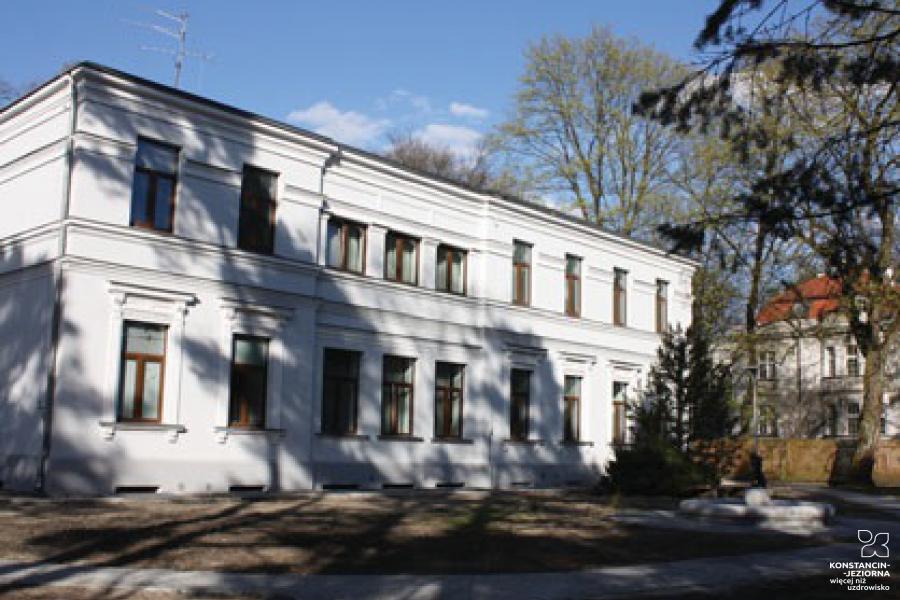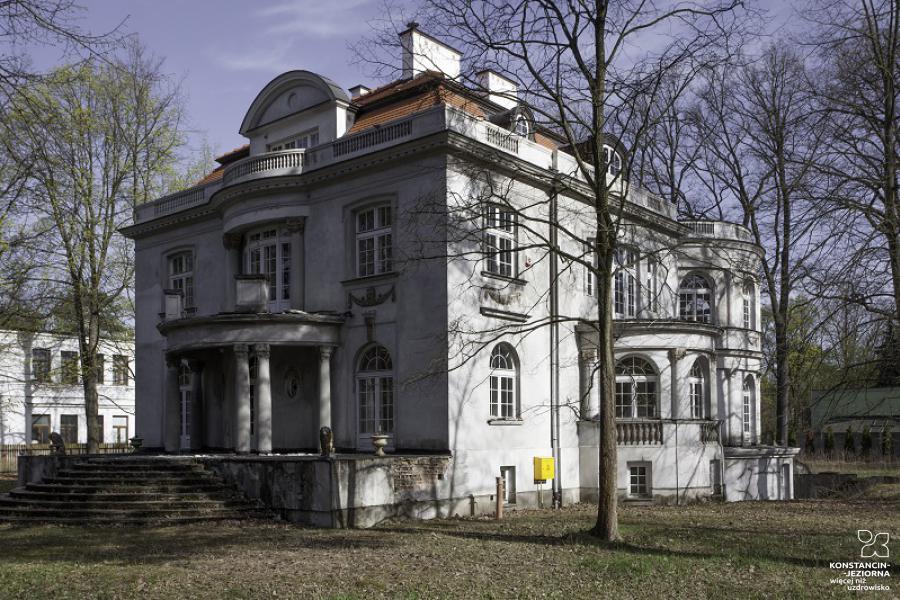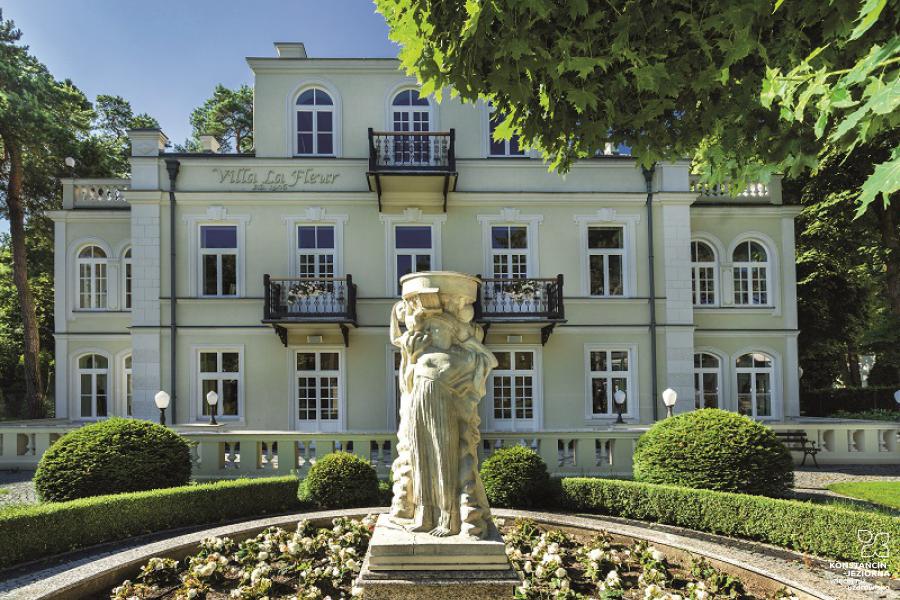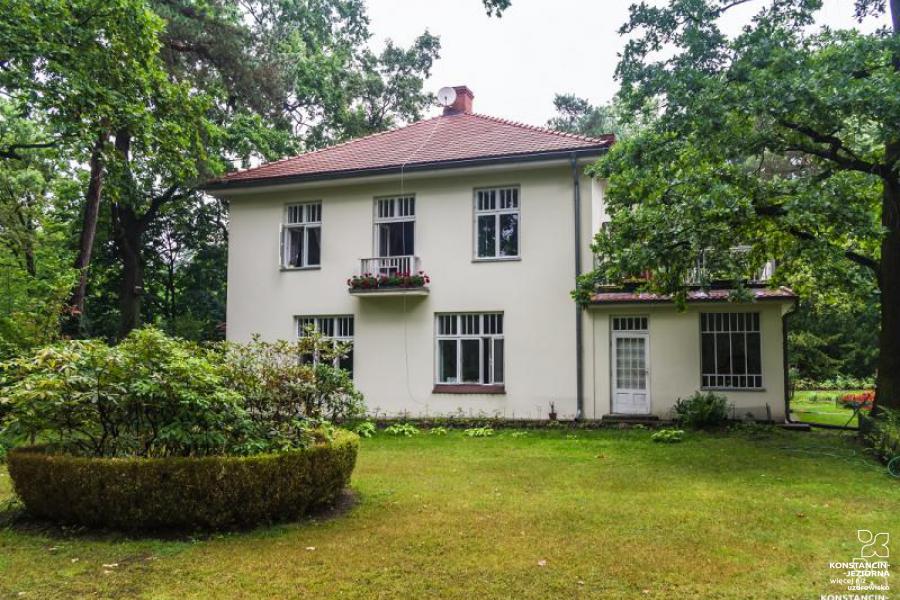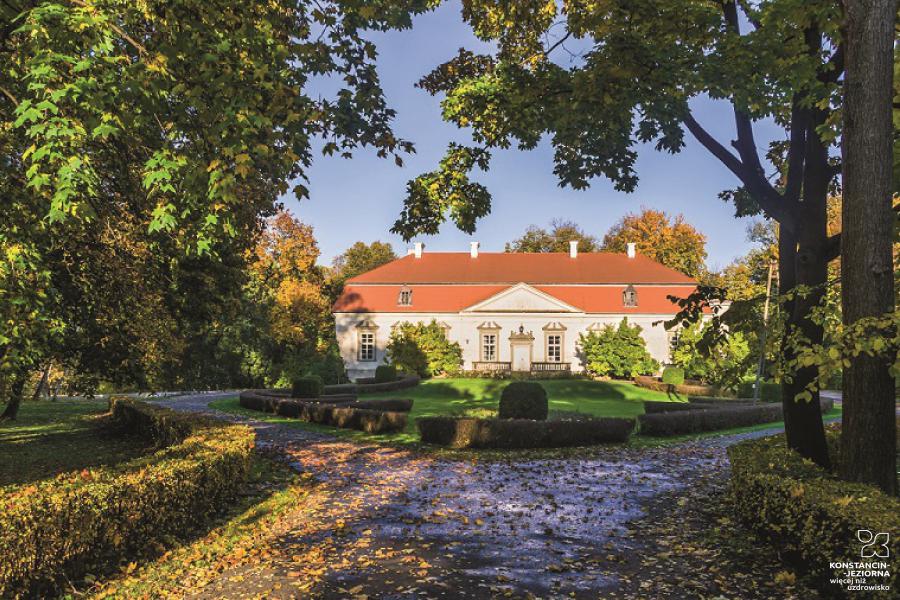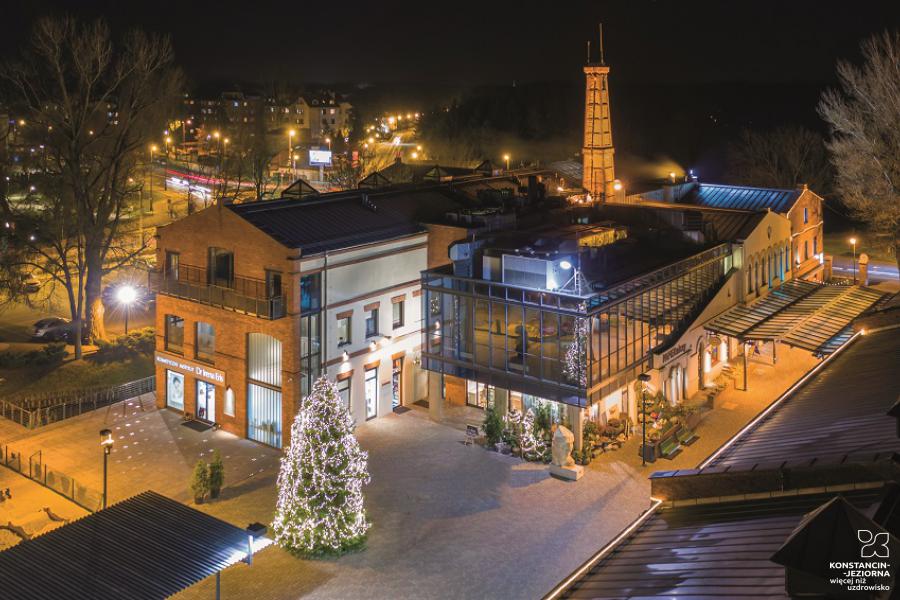Konstancin-Jeziorna abounds in heritage sites, places of historic interest, and memorabilia of people in creative professions who lived and worked locally.
With its rich variety of historic buildings in diverse architectural styles, Konstancin deserves to be revisited many times to savour its beauty and splendour. Many of the local houses were built by wealthy financiers, industrialists, and members of literary and artistic circles. Particularly worthy of note are the marvellous villas in the vicinity of the Spa Park, including:
Villa Kamilin, ul. Piłsudskiego 42 (built in 1905–06).
Probably commissioned by the Jankiewicz family, the building was originally designed in the neoclassical style. Restored in 2019, it now accommodates a wedding venue, a tourist information desk, and an exhibition area run by the Konstancin Community Centre.
Villa Gryf, ul. Sobieskiego 13 (built c. 1905).
Designed by Bronisław Colonny-Czosnowski, the villa evokes the architecture of German pensions. Originally a guesthouse owned by the poet and short-story writer Józefa Jaxa-Bąkowska, the villa was restored in 2019 and now houses a branch of the Public Library, a drop-in centre, and a branch of the local Community Centre.
Villa Hugonówka, ul. Mostowa 15 (built in 1902–03). This spacious building in the Spa Park was constructed for Hugo Seydel, a winemaker from Warsaw who was also a Commercial Court judge and an honorary Consul of the Kingdom of Serbia in Poland. At the turn of the century, Seydel had bought a plot of land close to the River Jeziorka on the border between two towns: Konstancin and Skolimów. The name of the villa comes from the owner’s first name. Restored to its former splendour, the Hugonówka now houses the Konstancin Community Centre.
Villa Leliwa, ul. Sienkiewicza 13 (built c. 1914).
This elegant guesthouse in the Viennese Art Nouveau style was popularly nicknamed an ‘outpost of Warsaw’s Bristol Hotel’. The original building had many eye-catching eclectic architectural details, including triangular arches over windows, exquisite balustrade plates, and in particular, the steep gable on the central axis. Extensively remodelled in the 1970s, the house has completely lost its original appearance.
Villa Izyhali, ul. Sienkiewicza 15 (built in 1926–27).
This neo-baroque house took its name from the names of Izabela and Halina, daughters of Władysław Paschalski, the owner of the villa. The semi-circular avant-corps was added to the south side of the building as part of a redesign project in the 1970s. The villa is now in private hands.
Inside the Villa la Fleur (ul. Szpitalna 15) is an exceptional private museum that everyone should visit. The splendid building with Art Deco interiors holds elaborate collections of paintings, sculptures, and prints by artists of the famous École de Paris. More information on www.villalafleur.com. Another noteworthy building is the water tower (ul. Żeromskiego 9) designed by Edward Lilpop and completed in 1899. This red-brick structure without plaster cladding is both an interesting townscape feature and a local landmark. The tower used to supply water to Konstancin-Jeziorna resort guests, but now is no longer in operation.
Modernist architecture is represented mainly by luxury residential homes of affluent landowners, lawyers, doctors, and entrepreneurs from Warsaw, who built their houses in the functionalist style in the 1920s. Of particular interest are the Villa Boża Wola (ul. Skargi 16), the Villa Allora (ul. Uzdrowiskowa 7), the Villa Jasia Guesthouse (ul. Jasiowa 6), and the villa of Janina and Franciszek Nowicki (ul. Gąsiorowskiego 15).
Throughout the 20th century, Konstancin had among its residents many prominent writers, poets, artists, architects, musicians, and opera singers. The impact of their presence can still be felt around the town today. The Villa Leliwa (ul. Sienkiewicza 15) played home to many remarkable personages, including literary men like Bolesław Prus, Henryk Sienkiewicz, Kornel Makuszyński, Tadeusz Boy-Żeleński, and Julian Tuwim.
The Villa Świt (ul. Żeromskiego 4) is a must-see hot spot for history buffs. It houses a municipal museum dedicated to Stefan Żeromski and his family. The writer bought the villa in 1920 as a present for his beloved Anna and their daughter Monika. Monika, a well-known painter and memoirist, lived here until her death in 2001. The house and garden can be visited without a charge by prior arrangement with the curator (call 609 550 652). It was in the Villa Świt that Żeromski penned some of his most famous works, including Przedwiośnie [Seedtime] (1924) and Wiatr od morza [Wind from the Sea] (1926).
Literature lovers will be thrilled to visit the palace and park at Obory (designed by Tylman of Gameren and completed in 1681–88). Originally the family residence of the Koniecpolski family, the Wielopolski family, and the Potulicki family, it served for seventy years as a writing retreat managed by the Union of Polish Writers. Among its guests were many eminent Polish authors and poets, including Kazimierz Brandys, Marian Brandys, Władysław Broniewski, Julia Hartwig, Artur Międzyrzecki, Marek Hłasko, and Miron Białoszewski.
The Ukrainka Guesthouse (ul. Batorego 16) had the pleasure of providing accommodation not only to the famous singer Mary Augustynowska (née Karnicka), but also to many British diplomats, and many artists, including the Russian bass-baritone Feodor Chaliapin. Wacław Gąsiorowski, a popular Polish writer and columnist, used to stay there in the 1930s.
History enthusiasts will certainly welcome the opportunity to discover remnants of the 18th-century Royal Paper Mill in Mirków. The mill produced and provided paper for official documents adopted by the Great Parliament of 1788-92, including the 3rd May Constitution of 1791, and for the first issue of Polish paper money.
In the heart of town stands another local landmark ― the Stara Papiernia [Old Paper Mill] shopping centre, built on the premises of a former rag-processing room which used to be a part of the Royal Paper Mill. Rebuilt after a devastating fire in 1984, it now serves as a commercial site with a variety of retail shops, restaurants, and other services.
The Konstancin Community Centre boasts a unique collection of ornamental paper cutouts assembled and donated by Antoni Śledziewski in 2012. This exquisite collection is on display at the Museum of Polish Paper Cutouts (ul. Anny Walentynowicz 18).




